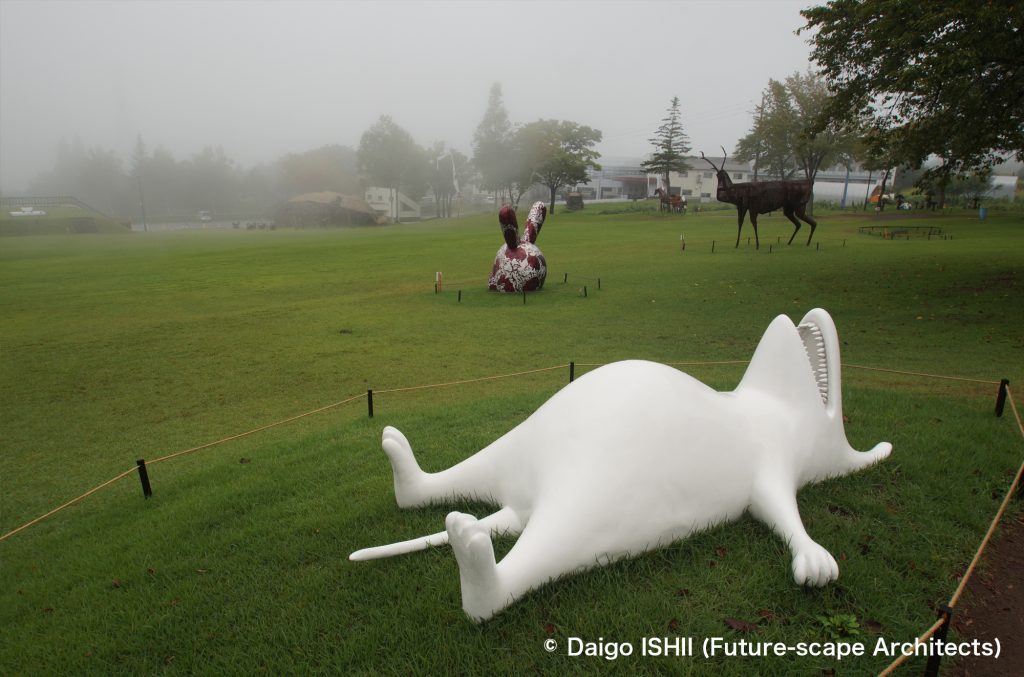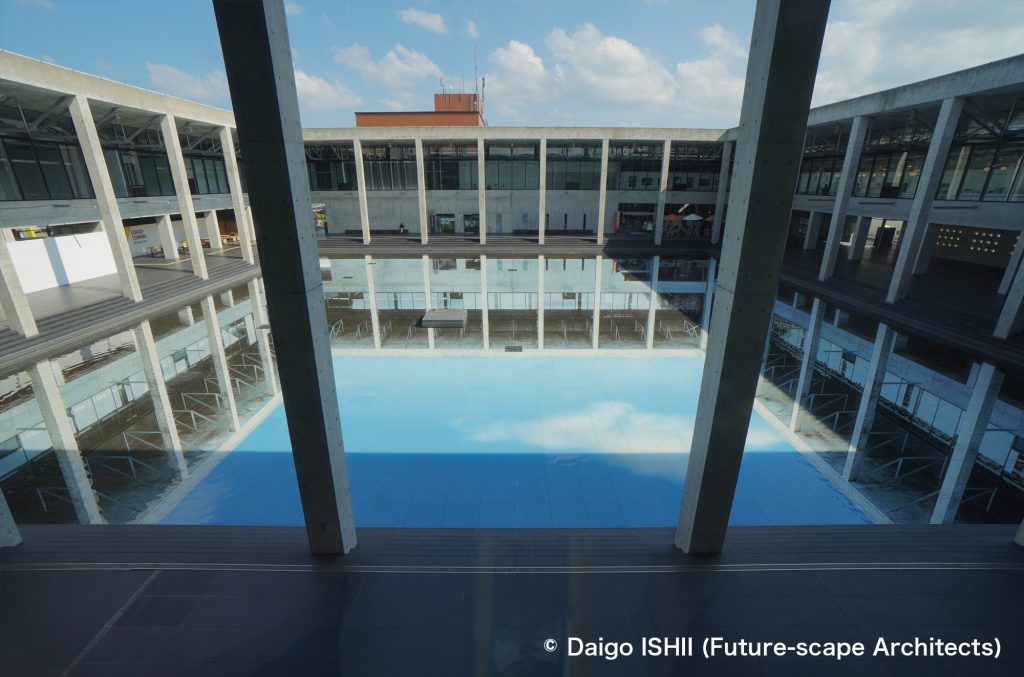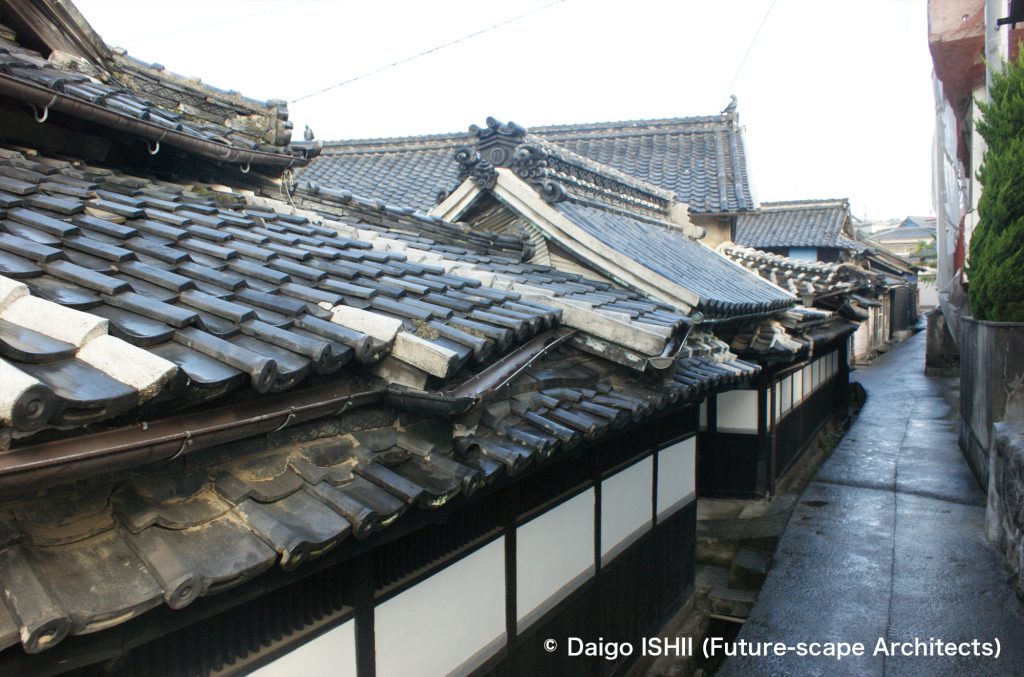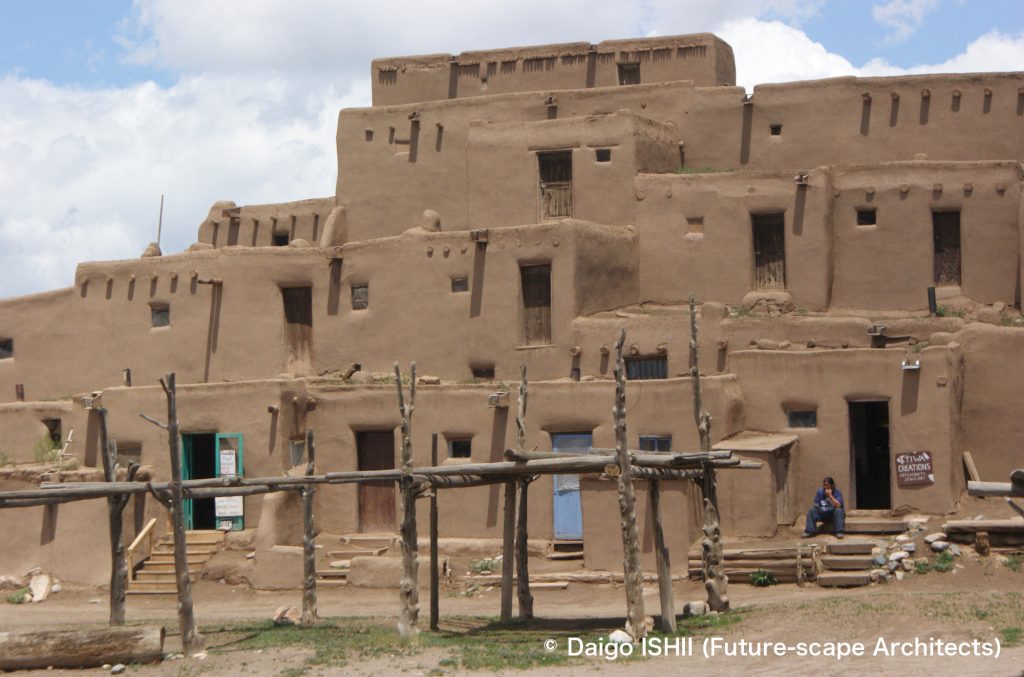英国人写真家ジョニー・ハイマスさんの写真集「たんぼ」は、日本を旅して田んぼを撮影したもの。その1/4ほどは、妻有の棚田を撮影しており、妻有の棚田は日本を代表する農風景のよう。
British photographer Johnny Hymas' photo book "Tambo (Rice field)" is a collection of photographs of rice fields taken during his travels in Japan. He took about 1/4 of them in Tsumari's rice terraces. Tsumari seems to represent Japan's agricultural landscape.
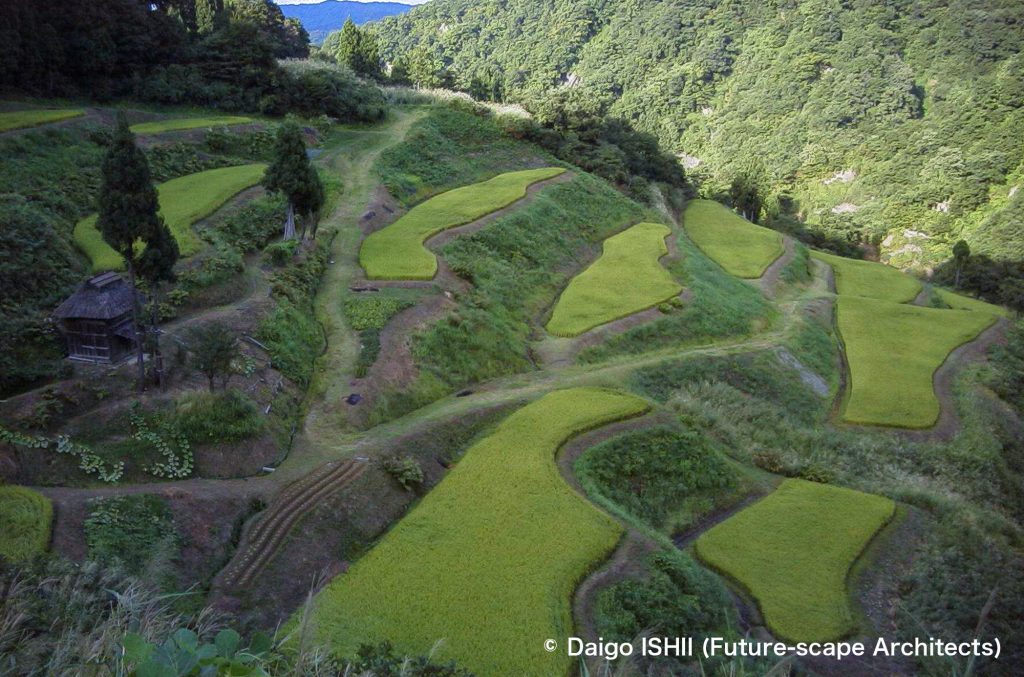
Early September : See the rice terraces in Amamizukoshi village, Matsunoyama.
https://goo.gl/maps/cP3s5tb3sM1XiaNt9
平地の少ない中山間地の集落が、米を確保するためにつくった棚田。地滑りによる緩斜面の発生が、大きく関わっています。妻有の松之山地区では、昭和37年(1962年)、地区面積の1割近くの大規模な地滑りが起き、1980年代には、松代地区も含めて地滑りの頻発で、このままでは住むことができなくなると言われました。原因は、褶曲や断層で粘土化した地層が水を含みやすいこと、そして、その下の水を通さない凝灰岩の地層角度が地滑り角度に近いこと、さらに、豪雪地ゆえ、雪解け水で、地下水位が高くなることです。大規模な土地の改変が困難な昔は、この地滑りが、棚田に可能な緩斜面を生み出し、農地をもたらしました。
おもしろいことに、地滑りが起きやすい緩やかな谷の地層と、地滑りの起きにくい山の地層が、北東から南西に、平行に配列しているのが、松代、松之山の特徴。棚田や集落も、その軸上の緩やかな谷に、きれいに配置しています。
そうやって、時間を掛けて、大事に維持して来た棚田は、美しい農業景観、雨水の調整などの環境効果の一方、労働効率が悪いために、高齢化、過疎化で耕作放棄が止まりません。25年間見ていますが、以前はきれいに稲を植えていた棚田も、耕作しにくい部分から荒れ、不定形の等高線カーブの美しかった棚田が、圃場整備で整形されたところもあります。 残念な反面、圃場整備は、棚田を生き残らせる術でもあり、難しいところ。
長い間、日本でいちばんの食味を誇っていたのは、川西地区の平坦な信濃川段丘のコシヒカリ。夏の1日の寒暖差、信濃川の川霧による恵みです。棚田米は、水や肥料も限られ、収量も少ない分、食味が増しているというのが、地元での一般的な説。正直、そこまで棚田米を食べ比べていないので、何とも言えませんし、手に入れるのが難しい。さらに、食味がいっそう増すのが、ハサ木での天日干し。手が掛かるため農家の自家消費が多いですが、友人からいただいた段丘産のハサ木米のおいしさはずば抜けていたので、その効果は保証します。価格を伺うと、東京のスーパーで、魚沼産コシヒカリが5キロ2500円ぐらいのところ、5000円とのこと。そのハサ木米が棚田産になると、庶民には手が届かないプレミアム価格になりそう。
にもかかわらず、妻有は、各農家の耕作面積が小さいため、取引価格は高いのに、専業農家では暮らせず、兼業農家が多いという矛盾を抱えています。日本を代表する農風景の地、妻有が、農業だけでは自立できない現実は、農業政策、生産形式など日本の問題そのもの。
Villages in semi-mountainous areas with little flat land created rice terraces to secure rice. Gentle slopes caused by landslides played a key role. In 1962, a large-scale landslide occurred in the area of nearly 10% of the Matsunoyama district in Tsumari. In the 1980s, landslides frequently occurred, including in Matsunoyama and Matsudai districts, and it was said that those districts would become uninhabitable. The reason was that clay strata formed by folds and faults tended to absorb water, the angle of the water-impermeable tuff stratum below it was similar to the landslide angle, and groundwater level rose when the snow melted due to heavy snowfall. In the old days, when people could not achieve a large-scale land alteration, the landslide, which created a gentle slope, resulted in rice terraces as agricultural land.
Interestingly, the landslide-prone gentle valley strata and the landslide-resistant mountain strata are disposed in parallel from the northeast to the southwest in the Matsunoyama and Matsudai districts. Rice terraces and villages are located on a gentle valley on that axis.
The rice terraces that have been carefully maintained over time have environmental benefits such as beautiful agricultural landscapes and rainwater adjustment. On the other hand, due to poor labor efficiency, aging and depopulation, the abandonment of cultivation doesn't stop. For 25 years since I visited here for the first time, some rice terraces wasted, and farm field development changed beautiful irregular contour lines into a shape of a lattice. That was unfortunate, but farm field development may be a resolution of the survival of rice terraces.
For a long time, the rice cultivated on the flat Shinano River terraces in the Kawanishi district of Tsumari had been selected as the best-tasting rice in Japan. The temperature difference during one day in the summer and the fog of the Shinano River produced it. Locals say that rice cultivated on the rice terrace grows with a limited amount of water and fertilizer, and the yield per area is low, so the taste is better. I haven't tasted the rice from the rice terrace few times, so I can't say anything about it. First and foremost, it's difficult to get hold of it. Furthermore, rice sun-dried on Hasagi (wooden bar) makes the taste even better. Since it takes a lot of work, the farmers themselves mainly consume Hasagi rice. The Hasagi rice, which my friend gifted me, was exceptionally delicious, so I guarantee its effectiveness. The price of Hasagi rice is two times more expensive than the normal price. If a rice is grown on a rice terrace and is dried on Hasagi, the price will be so premium that ordinary people cannot purchase.
Though the transaction price of rice produced in Tsumari is expensive, full-time farmers cannot afford to live, and most are part-time farmers because each farmer's cultivated area is small. The reality that they cannot stand on their own with just agriculture in Tsumari as the agricultural landscape representing Japan shows issues facing Japanese agriculture such as agricultural policies and production methods.
5月下旬 / Late May
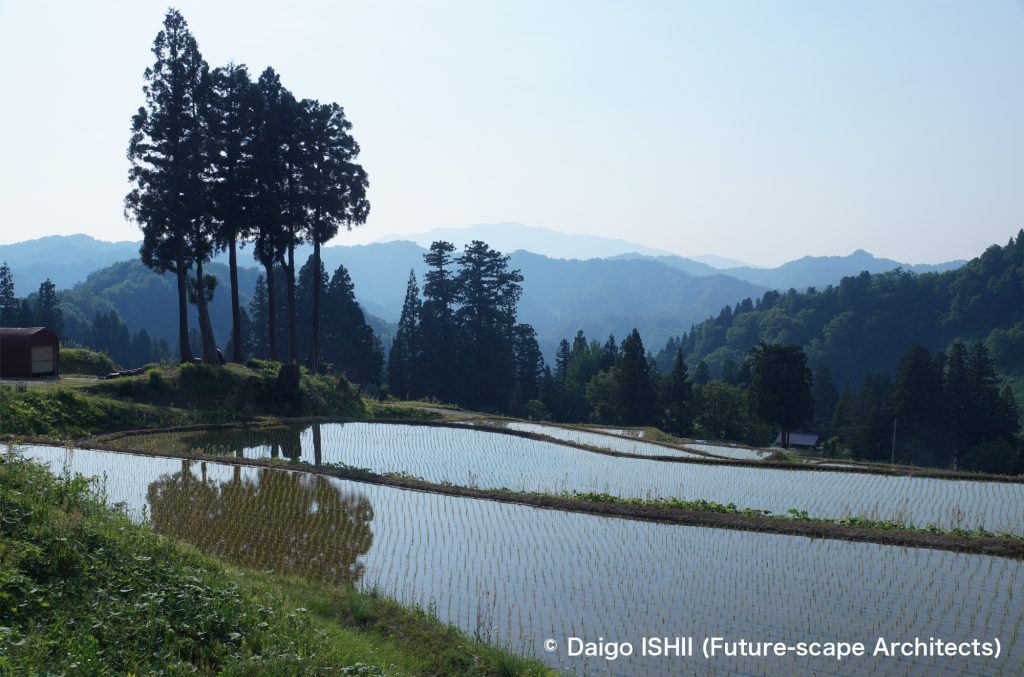
Late May : See the rice terraces in Fujisawa village, Kawanishi. Rice fields were filled with water, and a young rice plant was planted.
https://goo.gl/maps/tb4K8fGiwYRcjniKA
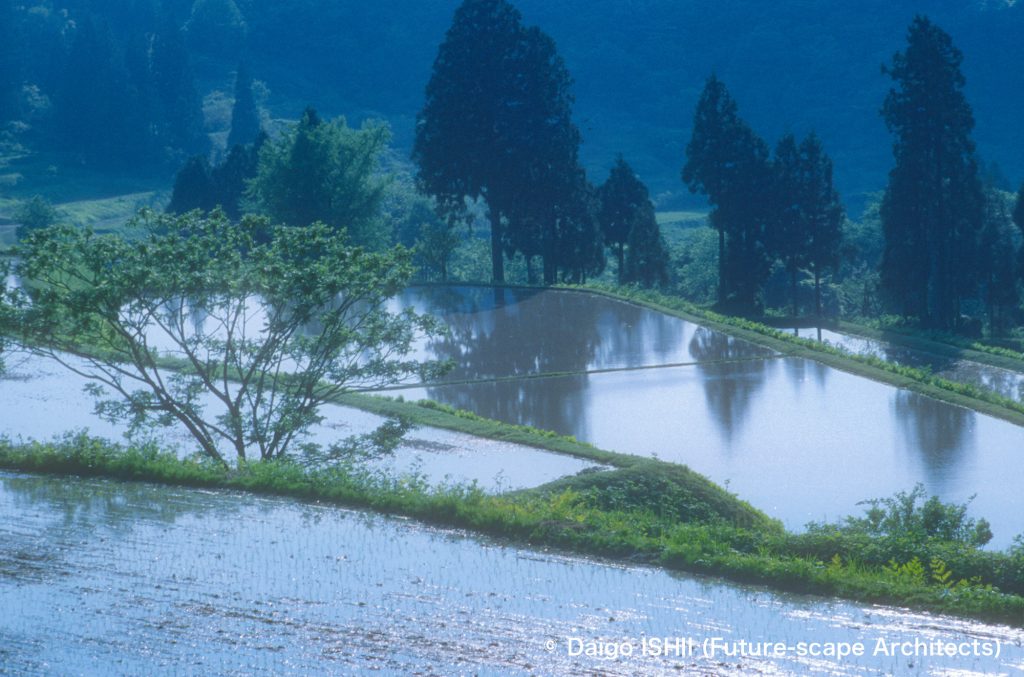
Late May : See the rice terraces in Karekimata village, Tokamachi. Rice fields were filled with water, and a young rice plant was planted.
https://goo.gl/maps/uMsJTkVHQ1tEDnKZ6

Late May : See the rice terraces in Amamizukoshi village, Matsunoyama. Rice fields were filled with water, and a young rice plant was planted.
https://goo.gl/maps/cP3s5tb3sM1XiaNt9
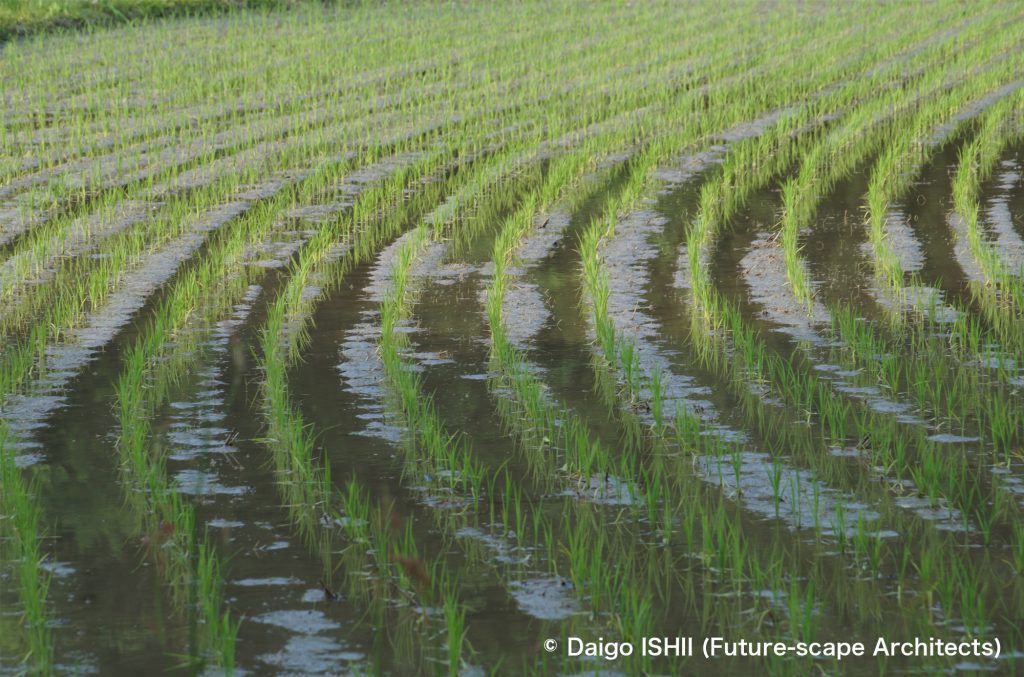
Late May : In the rice terraces of the Fujisawa village, Kawanishi, the rice seedlings are planted in a curve that matches the gently curved rice terraces.
7月下旬 / Late July
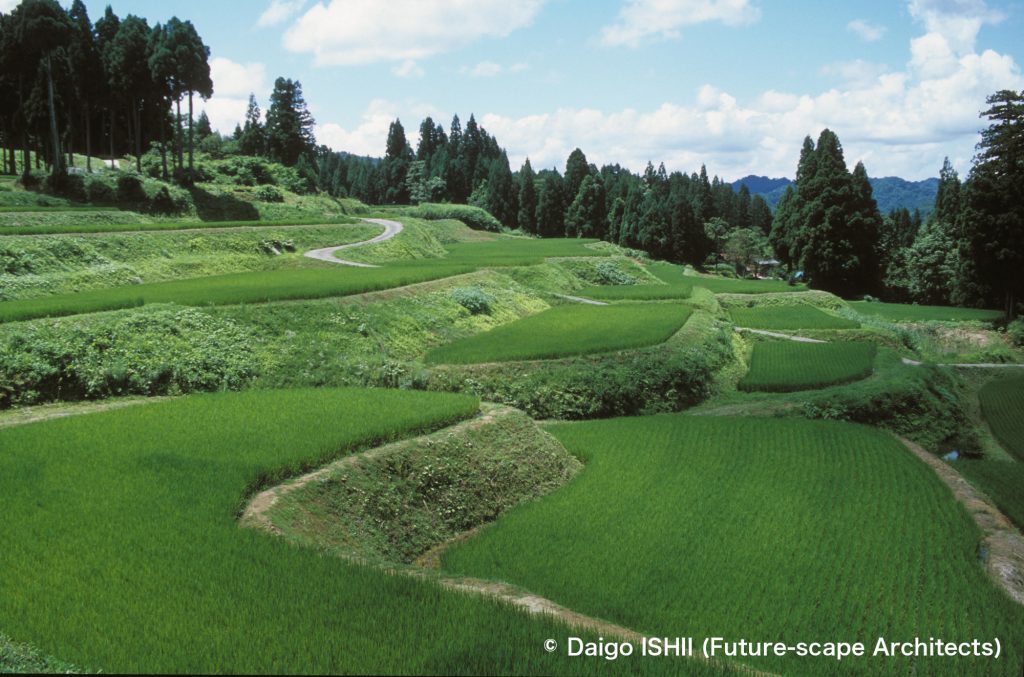
Late July : See the rice terraces in Fujisawa village, Kawanishi. In this season, rice is growing well.
https://goo.gl/maps/tb4K8fGiwYRcjniKA

Late July : See the rice terraces in Ohshirakura village, Kawanishi. In this season, rice is growing well.
https://goo.gl/maps/kvFuSbfQv18JSJLr5
8月下旬 / Late August

Late August : See the rice terraces in Fujisawa village, Kawanishi. A lot of rice has grown.
https://goo.gl/maps/tb4K8fGiwYRcjniKA
9月初旬 / Early September

Early September : See the rice terraces in Ketto village, Tsunan. Most rice terraces in Tsumari are built with a bank. In Ketto Village, stone rice terraces, which are rare in Tsumari, remain.
https://goo.gl/maps/5GCvVBPVBcA6bDNC9
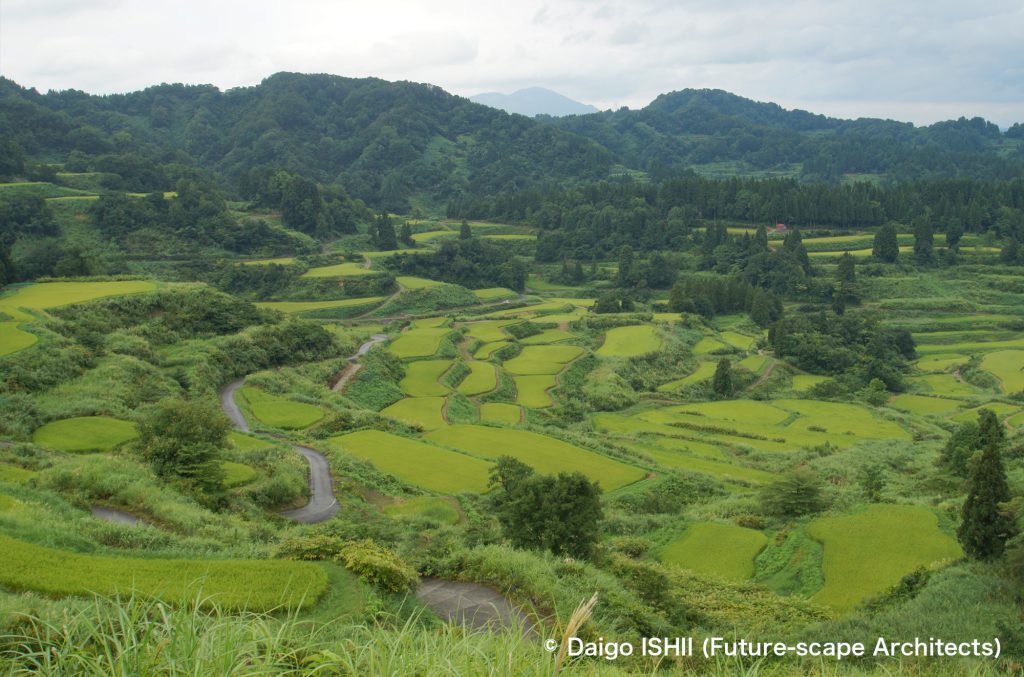
Early September : See the rice terraces seen from Hoshi Toge Ridge, Matsunoyama. Those were created 300 years ago and are composed of 200 rice terraces
https://goo.gl/maps/HLrw7rom6CQtnEZF8
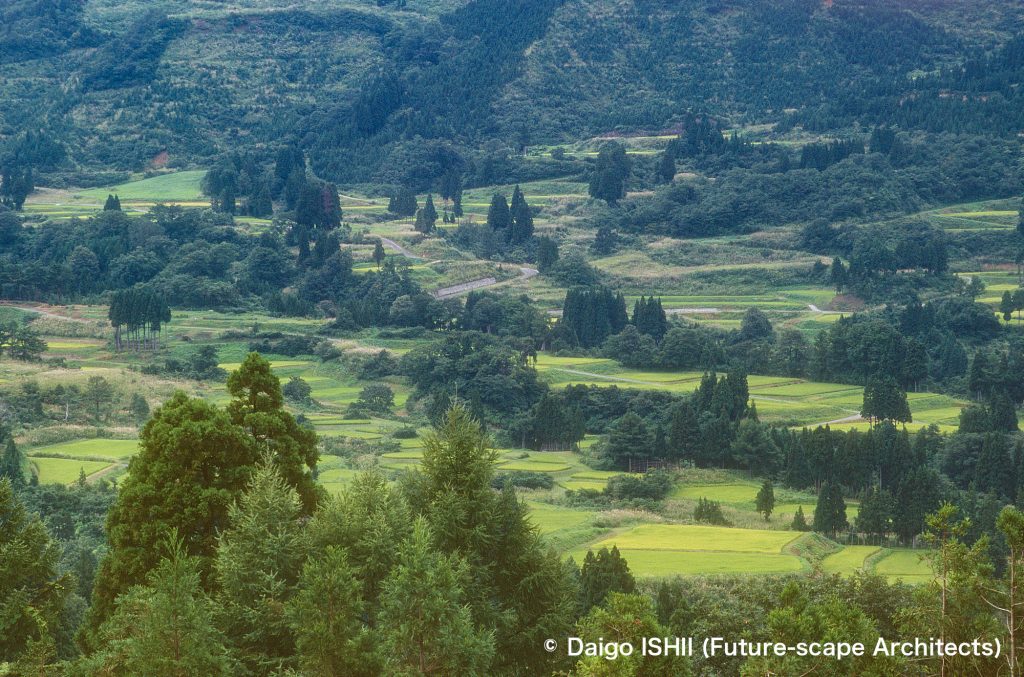
Early September : See the rice terraces in Daigonji Kogen Highlands, Matsunoyama. Those were created 300 years ago and are composed of 200 rice terraces.
https://goo.gl/maps/9Bmz95raqUStN6Mc8
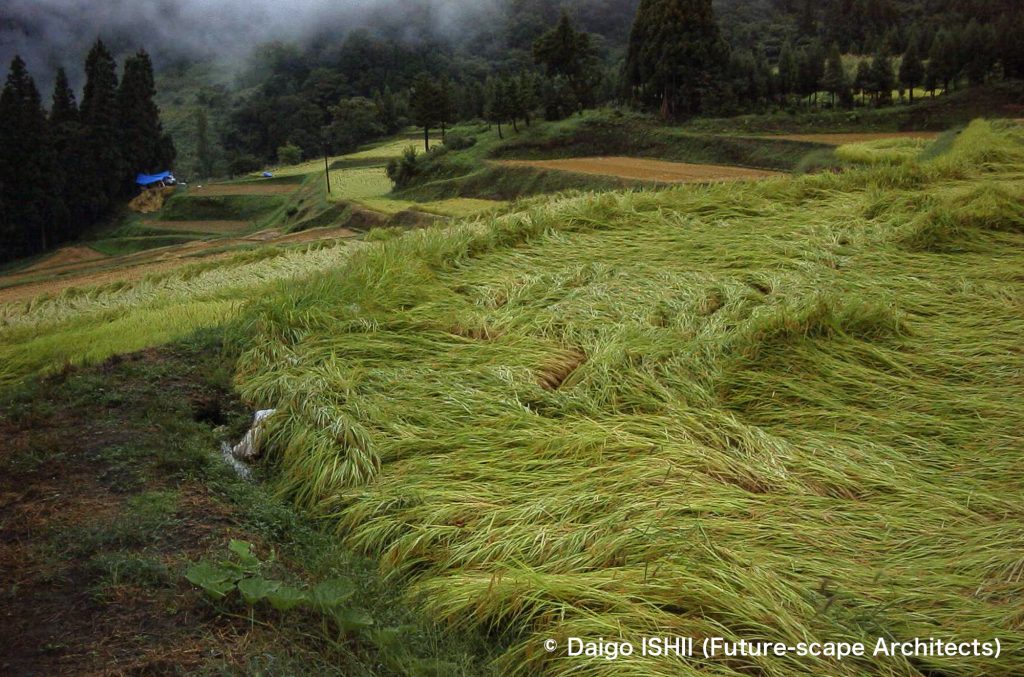
Early September : See the rice terraces in Fujisawa village, Kawanishi. Rice is harvested in the typhoon season, and depending on the year, the typhoon knocks over the rice before harvesting.
https://goo.gl/maps/tb4K8fGiwYRcjniKA
9月中旬 / Mid September

Mid September : See the rice terraces on Daigonji Kogen Highlands, Matsunoyama. Harvest season has come.
https://goo.gl/maps/9Bmz95raqUStN6Mc8
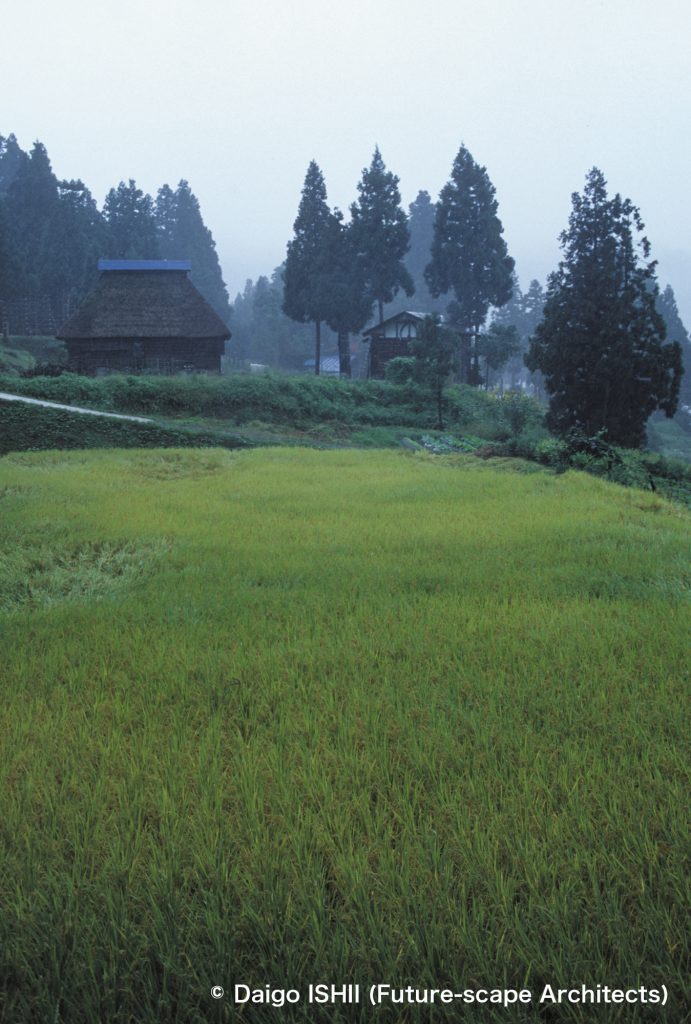
Mid September : See the rice terraces in Sone village, Matsunoyama. Harvest season has come.
https://goo.gl/maps/8YwDwyntuDGqh97e8
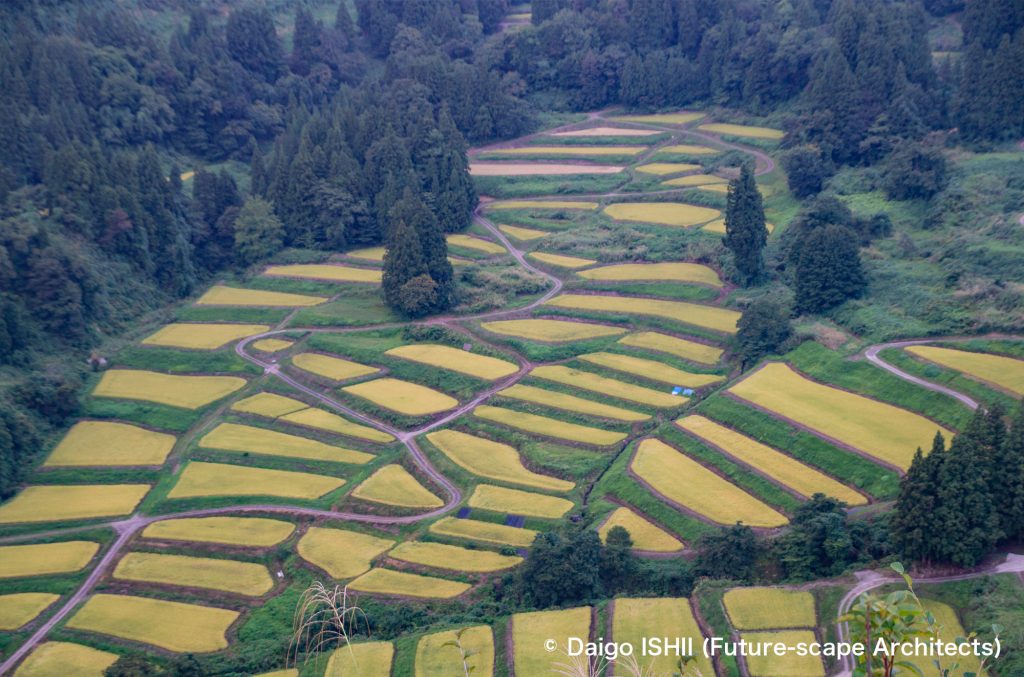
Mid September : See the rice terraces in Ketichi, Tokamachi. Harvest season has come.
https://goo.gl/maps/Zi8Efr7AjeUJXUVu5
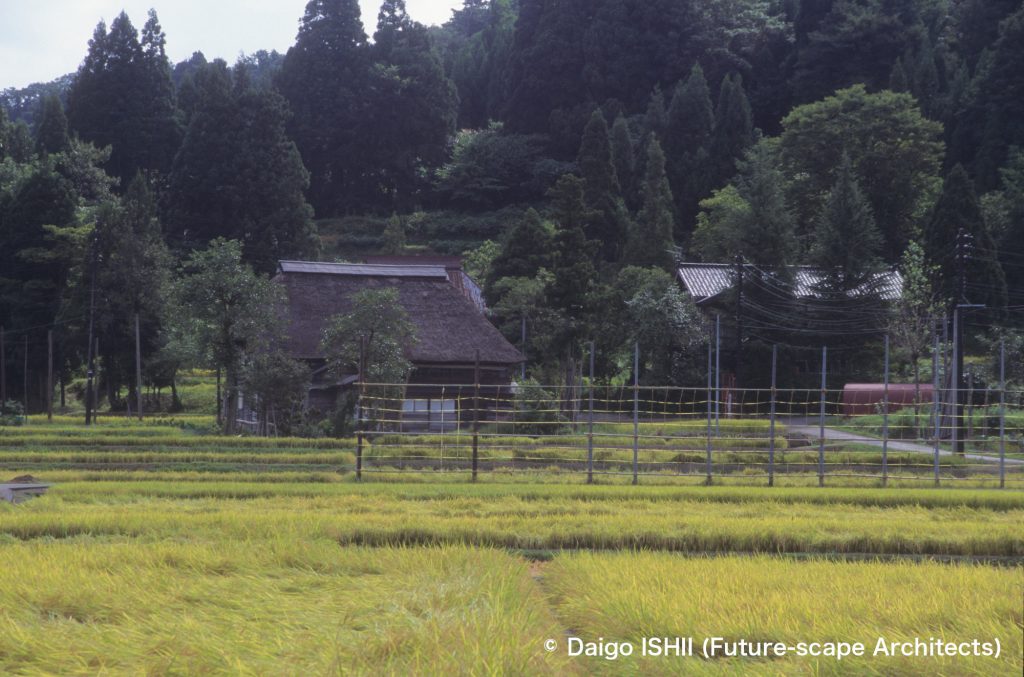
Mid September : See Hasagi preparing on the rice terraces in Tsunan.
https://goo.gl/maps/a2MnEknq9srwpQMWA
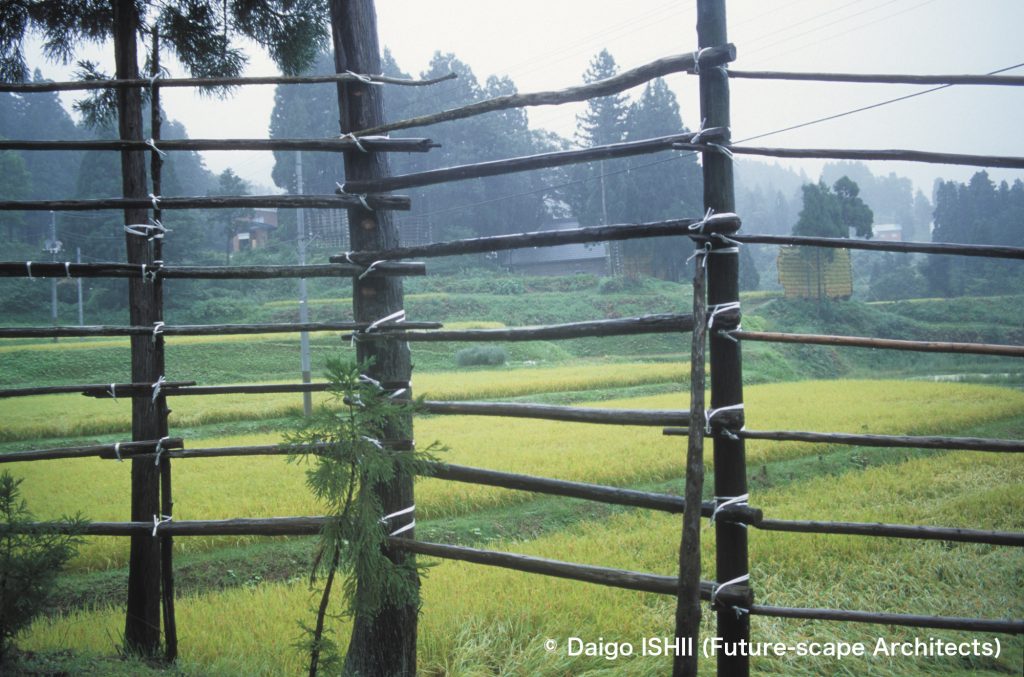
Mid September : See Hasagi preparing on the rice terraces in Matsunoyama.
https://goo.gl/maps/kFt8wx4R1jwyzjcs6

Mid September : See the rice harvest on the rice terraces in Kawanishi.
https://maps.app.goo.gl/MJ2umorWVgwFZxW9A

Mid September : See Hasagi on which rices are hung in Matsunoyama.
https://goo.gl/maps/kFt8wx4R1jwyzjcs6
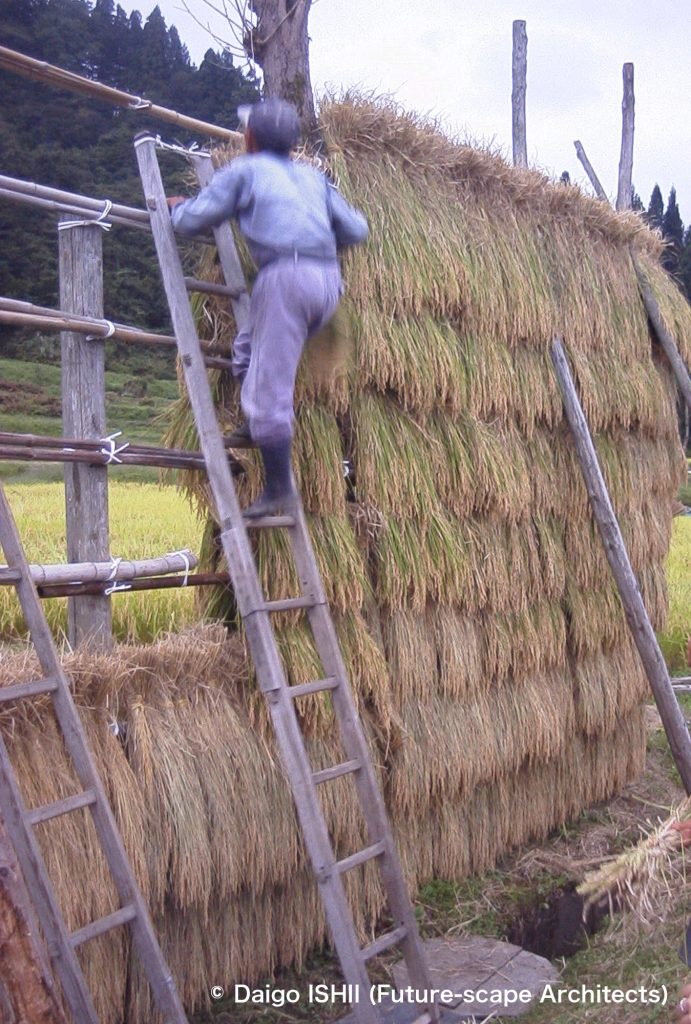
Mid September : See Hasagi in Urada Village, Matsunoyama. A farmer hangs rices on Hasagi to dry.
https://goo.gl/maps/5c792RoEcKC5gqkF8

Mid September : See rice terraces in Tsunan. After the middle of September, it rains a lot in Tsumari.
https://goo.gl/maps/5c792RoEcKC5gqkF8
1月中旬 / Mid January
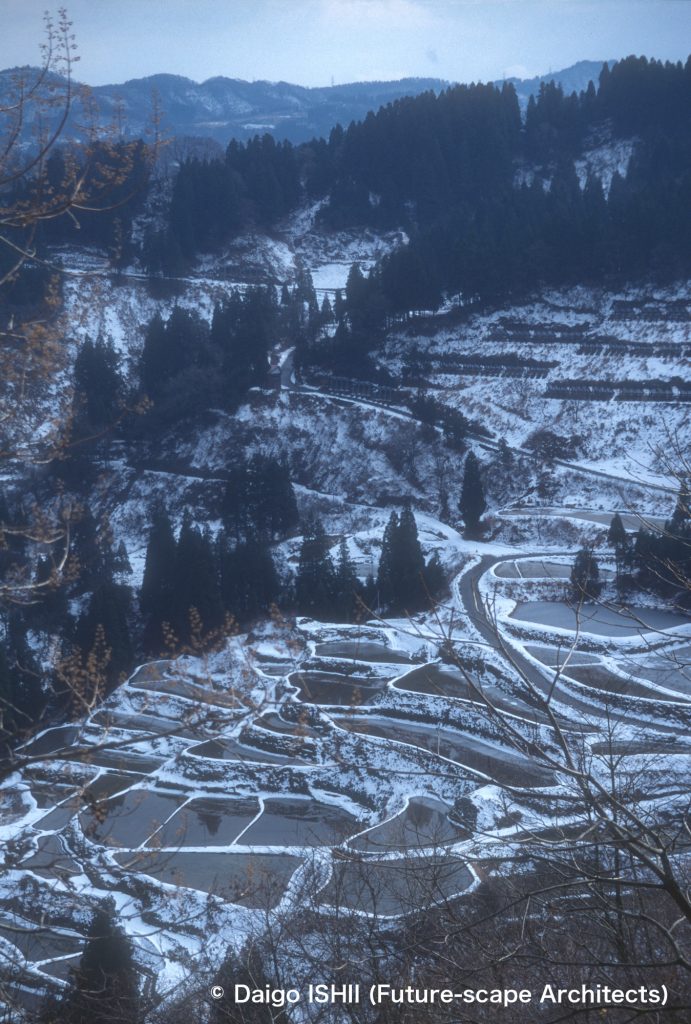
Mid January : Rice terraces in Matsudai Castle Hill of Matsudai are covered with light snowfall.
https://goo.gl/maps/YrEFB6KYGSHzVtvg6
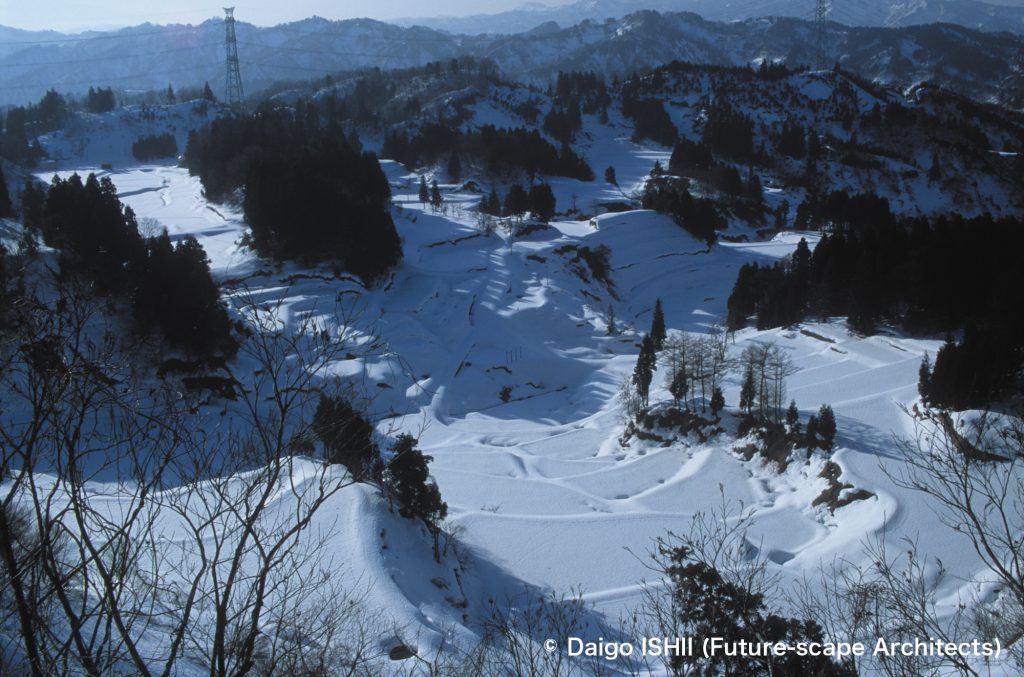
Mid January : Rice terraces in Ohshirakura village of Kawanishi are covered with snowfall.
https://goo.gl/maps/kvFuSbfQv18JSJLr5
ご感想はこちらへ / Click here for your impressions
参考文献 / reference
Wikipedia
"たんぼ めぐる季節の物語"(ジョニー・ハイマス,NTT出版,1994)
"越後妻有アートネックレス整備事業計画書"(アートフロントギャラリー,1999)
写真の無断使用、転用はご遠慮下さい。/ Please do not use or upload our photos without permission.
